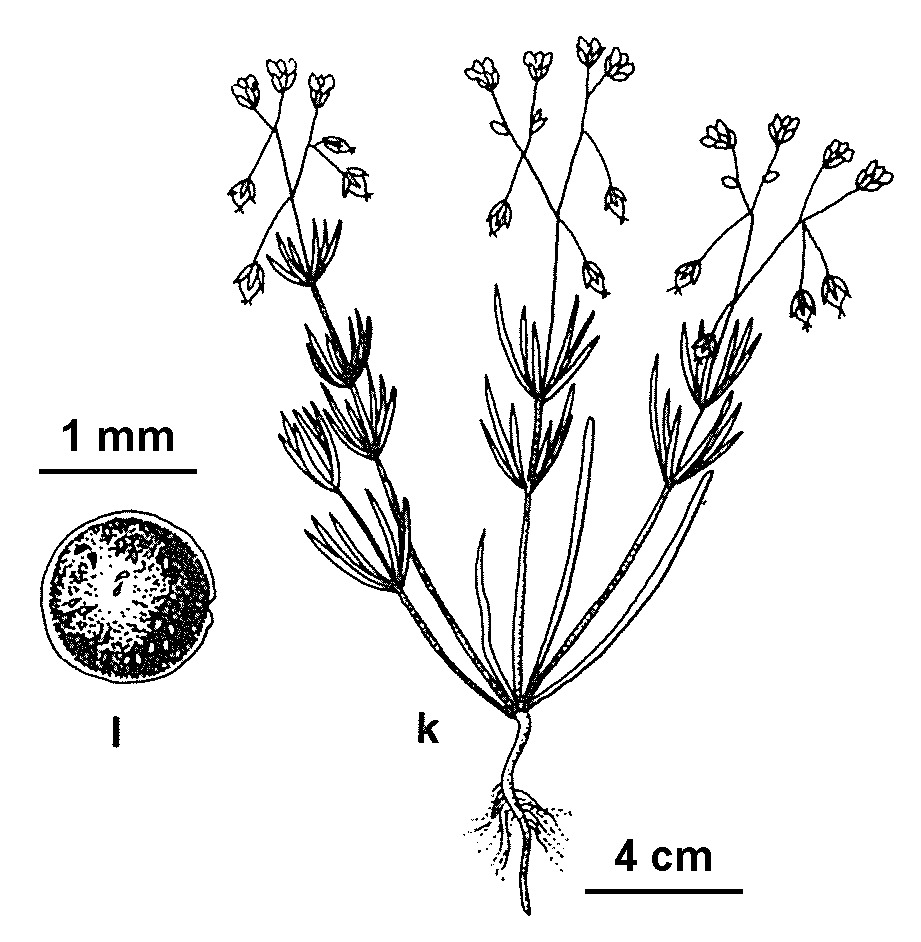Spergula arvensis
L. Corn SpurreyAnnual with slender to robust taproot; weakly to strongly glandular-pubescent. Stems decumbent to ascending, geniculate, 7–40 cm long. Leaves sessile, narrow-linear, 10–30 mm long, 0.3–0.8 mm wide, obtuse, fleshy, margins strongly revolute; stipules small, scarious, often caducous. Inflorescence branching, paniculate. Flowers 4–7 mm diam.; pedicels glandular-puberulent, 4–20 mm long, often strongly deflexed after flowering; calyx more or less glandular-hairy, sepals ovate, obtuse, with narrow scarious margins, 3–5 mm long; petals obovate, obtuse, white, slightly longer than sepals; stamens 5–10. Capsule ovoid-conical, up to twice sepal length; seeds blackish, usually sparsely white-papillose, 1.2–1.5 mm diam., keeled or very narrowly winged. Flowers Aug.–Nov.
Wim, VVP, VRiv, MuF, GipP, OtP, Gold, CVU, HSF, HNF, VAlp. Also naturalised WA, SA, Qld, NSW, Tas. Native to Europe, northern Asia. A weed of disturbed, often sandy soils predominantly in temperate regions.
Adams, L.G. (1996). Caryophyllaceae. In: Walsh, N.G.; Entwisle, T.J., Flora of Victoria Vol. 3, Dicotyledons Winteraceae to Myrtaceae, pp. 228–271. Inkata Press, Melbourne.
 Spinning
Spinning




